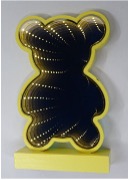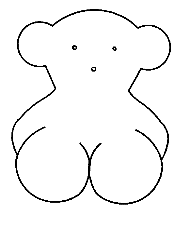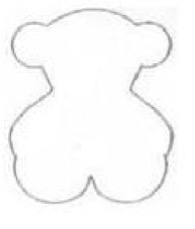BACKGROUND TO THE DISPUTE
Zhejiang China-Best Import & Export Co. Ltd, is the proprietor of Community design No 4422343 0012, which was applied for and registered on 26 October 2017, as part of a multiple application, for ‘luminaires’ falling within class 26.05 of the Locarno Agreement and is represented in the following image:

On 10 July 2018, the appellant, S. TOUS, filed an application with the European Union Intellectual Property Office (EUIPO) for a declaration of invalidity of the contested design, alleging two grounds, firstly, infringement of Article 25(1)(b) of Regulation (EC) No 6/2002, on the ground of lack of a registration for ‘luminaires’. No 6/2002 on account of the lack of individual character of that design and, secondly, infringement of Article 25(1)(e) on account of the unauthorised use of the appellant’s earlier distinctive sign, since the registration of the contested design was incompatible with the earlier registrations.
The application for a declaration of invalidity was based, inter alia, on the following earlier rights:
– EU figurative mark No 1755636, reproduced below, filed on 13 July 2000, published on 19 March 2001, registered on 7 September 2001 and renewed for goods in Classes 3, 9, 14, 18 and 25 of the Nice Agreement.

– EU figurative mark No 8127128, reproduced below, filed on 26 February 2009, published on 21 September 2009, registered on 26 January 2010 and renewed for goods in classes 14, 18 and 25.

By decision of 20 May 2019, the Cancellation Division rejected the application for a declaration of invalidity. On 19 July 2019, the appellant filed an appeal against the Cancellation Division’s decision with EUIPO pursuant to Articles 55 to 60 of Regulation No 6/2002. By decision of 26 May 2020 (‘the contested decision’), the Third Board of Appeal of EUIPO dismissed the appeal, finding that the contested design had individual character and that there was no likelihood of confusion with the earlier marks relied on by the appellant.
DECISION OF THE GENERAL COURT
First plea: infringement of Article 25(1)(b) of Regulation No 6/2002 in conjunction with Articles 6 and 7 of that regulation
It is necessary to consider whether, from the point of view of the informed user and having regard to the degree of freedom which the designer may enjoy, the overall impression produced by the contested design differs from that produced by the earlier conflicting marks.
On the degree of freedom of the designer
A wide degree of freedom of the designer in developing a design supports the conclusion that designs between which there are no significant differences produce the same overall impression on the informed user (judgment of 9 September 2011, Kwang Yang Motor v OHIM – Honda Giken Kogyo (Internal combustion engine), T 11/08, not published, EU:T:2011:447, paragraph 33).
As regards lighting equipment, the degree of freedom of the author was medium. However, it stated that that freedom was not, in principle, subject to any limitation as regards graphic forms.
The Board of Appeal rightly held that, although the degree of freedom of the designer was high in respect of graphic forms, it was only medium in respect of lighting fittings.
The informed user
It is clear from the contested decision that the Board of Appeal confirmed the findings of the Invalidity Division in this regard, that the informed user is a person who is well acquainted with the category of goods in which the design in dispute may be used. It also follows from the case-law that the informed user, as an end-user, is aware of the lamps available on the market, knowledge which comes from reading advertising material, catalogues and visits to well-known sales outlets or trade fairs (see, to that effect, judgment of 28 September 2017, Star-shaped lamp, T 779/16, not published, EU:T:2017:674, paragraph 21).
It follows from the foregoing that, contrary to the Appellant’s assertions, the Board of Appeal correctly applied the concept of an informed user.
The overall impression
In that regard, it must be observed that, in the case of the contested design, the lighting effect produced by the combination of the mirror and the small lamps is not inconspicuous and that that feature does not appear in the earlier marks. Furthermore, the contour of the contested design is different from that of the earlier marks. Whereas the shape of the frame of the contested design depicts a standing teddy bear with thin paws and slightly larger, upward-facing ears, the teddy bear depicted in the earlier marks is seated, its paws are thicker and its low-set ears project from the sides of its head. Furthermore, the contours of the contested design are less disproportionate than those of the earlier marks, in which the bear appears bulkier at the bottom.
Therefore, the Board of Appeal rightly concluded in the contested decision that the overall impression produced by the contested design was different from those produced by the earlier marks.
It follows that the Board of Appeal correctly applied Articles 25(1)(b) and 6(2) of Regulation No 6/2002 in concluding that the earlier rights did not conflict with the individual character of the design in dispute.
It follows from the foregoing that the first plea must be rejected.
Second plea: infringement of Article 25(1)(e) of Regulation No 6/2002 in conjunction with Article 9(2)(c) of Regulation No 2017/1001
The main question is whether the appellant has established the reputation of the two earlier conflicting marks.
This is not the case. It is true that, during the administrative procedure, the appellant submitted a number of documents (such as photographs of various celebrities acting as ambassadors for the TOUS marks, various advertisements, lists of the results of an internet search for the term ‘tous’, catalogues, statements and photographs). However, it did not provide evidence of the reputation of the two earlier conflicting marks in relation to the goods on the basis of which the application for a declaration of invalidity had been filed. Consequently, the appellant’s argument concerning the existence of an unfair advantage cannot succeed either, as the conditions laid down in Article 9(2)(c) of Regulation 2017/1001 are not fulfilled.
It follows from the foregoing that the second plea must be rejected and, consequently, the action must be dismissed in its entirety.
JUDGMENT OF THE GENERAL COURT (SECOND CHAMBER) OF 7 JULY 2021. CASE T 492/20.


 Español
Español Deutsch
Deutsch